7 Ways to Explode your solar panel installion
7 Ways to Maximize Your Solar Panel Installation: Unlocking Maximum Efficiency and ROI
Solar energy has become one of the most popular and sustainable energy solutions for homeowners and businesses alike. With the growing concerns over rising energy costs and environmental impact, more people are turning to solar power as a way to reduce their carbon footprint and achieve energy independence. But while the decision to install solar panels is a significant step toward a greener future, it’s just the beginning of the journey. To truly reap the benefits, you need to optimize your solar panel installation for maximum efficiency and return on investment (ROI).
A well-planned and properly maintained solar installation can generate more power, last longer, and save you more money over its lifetime. However, achieving these outcomes requires more than simply installing panels on your roof. Factors such as location, panel quality, system design, maintenance, and energy storage play critical roles in determining the overall performance of your solar system. Whether you’re a new adopter or looking to enhance your existing system, there are actionable steps you can take to unlock its full potential.
In this guide, we’ll explore 7 key strategies to maximize your solar panel installation. From choosing the perfect location and investing in high-quality equipment to leveraging custom designs and taking advantage of financial incentives, these tips will empower you to make the most of your solar investment. Each method is supported by practical advice, industry insights, and real-world examples to ensure you have a clear path toward achieving optimal results.
By following these proven strategies, you’ll not only boost your system’s energy production but also increase your financial savings and contribute to a cleaner planet. Whether you’re motivated by environmental stewardship or economic benefits, this guide will help you make smarter choices for your solar journey. Let’s dive into the seven ways to maximize your solar panel installation and harness the true power of the sun.
1. Choose the Ideal Location for Your Panels
Maximizing the efficiency and longevity of your solar panel system starts with one fundamental decision: choosing the ideal location for your panels. Solar panels thrive on exposure to sunlight, and even minor placement errors can result in significant losses in energy output. Whether you’re installing solar panels on your roof or opting for a ground-mounted system, understanding how sunlight exposure, shading, orientation, and mounting options affect efficiency is crucial.
In this guide, we’ll dive deep into the science behind sunlight exposure, the importance of orientation and angle, the pros and cons of ground-mounted systems, and real-world case studies that highlight the impact of strategic placement. By the end, you’ll have the tools and insights needed to select the perfect spot for your solar panels.
The Science of Sunlight Exposure: Importance of Positioning
Solar panels are designed to capture and convert sunlight into electricity, making direct sunlight exposure their lifeblood. However, not all areas of your property are created equal in terms of sunlight availability. Factors such as geographic location, weather patterns, and nearby obstructions all play a role in determining how much energy your system will produce.
Key Considerations for Maximizing Sunlight Exposure:
- Daily Sun Path: The sun’s trajectory changes throughout the day and year. Installing solar panels in areas that receive consistent sunlight during peak hours (typically 10 AM to 4 PM) will yield the best results.
- Seasonal Variations: Depending on your latitude, the sun’s position will vary with the seasons. In higher latitudes, the sun sits lower in the sky during winter, necessitating adjustments in panel tilt or placement which all needs careful consideration for solar panel installations.
- Solar Radiation Data: Tools like Solar Pathfinder or apps such as Google Project Sunroof can provide detailed insights into your location’s solar potential. Use these tools to map the sunlight availability on your property.
Shading and Its Impact: Understanding How Even Minor Obstructions Reduce Efficiency
One of the most common challenges in solar panel installation is shading. Even a small amount of shade from trees, chimneys, or nearby buildings can have a disproportionate impact on a system’s efficiency. This is because solar panels are often wired in series, meaning that shading on one panel can reduce the output of the entire array.
Effects of Shading:
- Partial Shading: A single shaded cell can reduce output by as much as 30%, depending on the panel’s design.
- Consistent Shading: Persistent shading can significantly reduce overall energy production and ROI.
- Temperature Effects: Shaded panels can become hotspots, leading to long-term damage and reduced lifespan.
Solutions to Combat Shading:
- Microinverters and Power Optimizers: These devices allow each panel to operate independently, minimizing the impact of shading.
- Tree Trimming and Landscaping: Removing or trimming trees near the installation site can mitigate shading issues.
- Avoiding Obstructions: Conduct a thorough site assessment to identify potential sources of shade throughout the year.
Roof Orientation and Angle: Finding the Best Alignment Based on Geography
The orientation and tilt angle of your solar panels directly affect their energy output. Proper alignment ensures that the panels receive the maximum amount of sunlight throughout the year.
Orientation:
- In the Northern Hemisphere, panels should ideally face true south to capture the most sunlight.
- In the Southern Hemisphere, panels should face true north for optimal exposure.
- East- or west-facing panels can work but will generate less energy overall, with east-facing panels producing more power in the morning and west-facing panels in the afternoon.
Angle:
- The ideal tilt angle typically matches your location’s latitude. For instance, if you live at 30° latitude, a 30° tilt is optimal.
- Adjustable tilt systems can help optimize energy capture for different seasons:
- Steeper angles are better for winter when the sun is lower in the sky.
- Shallower angles are better for summer when the sun is higher.
Flat Roofs:
On flat roofs, tilt racks are used to angle panels correctly. Ensure there’s adequate spacing between rows of panels to prevent shading from one row to the next.
Ground-Mounted Panels: When to Consider Them Over Roof Installations
While rooftop solar panel installations are the most common, ground-mounted systems can offer several advantages, especially in situations where roof space is limited or unsuitable.
Advantages of Ground-Mounted Panels:
- Optimal Placement: Solar panels can be positioned in the sunniest location on your property, avoiding obstructions like chimneys or dormers.
- Adjustable Tilt: Ground-mounted solar panel installation systems often allow for seasonal angle adjustments, boosting year-round efficiency.
- Ease of Maintenance: Panels at ground level are easier to clean and service.
- Scalability: Ground-mounted solar panels systems offer more flexibility for expansion compared to roof-mounted installations.
Challenges of Ground-Mounted Panels:
- Require significant space, making them less suitable for urban or densely populated areas.
- May involve additional costs for trenching and wiring to connect to your home.
- Need to comply with local zoning regulations and may require permits.
Case Study: Comparing Real-World Installations with Varying Placements
Case Study 1: Roof-Mounted Solar Panels on a Shaded Roof
A homeowner in Hampshire installed 5 kW of panels on a west-facing roof partially shaded by a large oak tree. Due to shading and suboptimal orientation, the system only produced 3.5 kW on average, a 30% efficiency loss compared to the homeowner’s expectations. By trimming the tree and adding microinverters, they improved output by 20%.
Case Study 2: Ground-Mounted Solar Panel System in an Open Field
A family in rural Dorset opted for a ground-mounted system on their sunny property. The 10 kW system was strategically placed to avoid any obstructions and was installed with a tilt mechanism for seasonal adjustments. As a result, the system exceeded energy production estimates, providing consistent power throughout the year.
Key Takeaways:
- Strategic placement can drastically improve energy production.
- Addressing shading and optimizing tilt can significantly boost efficiency, even in challenging conditions.
Conclusion: Making the Right Choice
Choosing the ideal location for your solar panels is the foundation of a successful installation. By understanding the science of sunlight exposure, addressing shading, optimizing orientation and angle, and exploring ground-mounted options, you can ensure your system operates at peak performance. Careful planning and consideration will not only increase your energy output but also maximize your return on investment.
When in doubt, consult with a solar installation professional to perform a detailed site assessment and design a system tailored to your specific needs. Remember, every property is unique, but with the right strategy, you can harness the full power of the sun.

Here you can see the majority of solar panels installed on the south elevation of the roof, this will maximize generation throughout the day.
Maximizing Solar Efficiency with East and West Roof Installations
In the video above, you can see an excellent example of a recent solar panel installation by the Starks Electrical and Solar team, demonstrating how panels installed on both east and west-facing elevations can maximize energy production throughout the day.
Why Choose East and West Installations?
- Morning and Afternoon Balance:
- Panels on the east-facing roof generate the most power in the morning as the sun rises, ensuring your energy needs are met during the early hours.
- Panels on the west-facing roof pick up in the afternoon as the sun sets, helping to charge your battery fully by evening.
- Battery Optimization:
- This setup ensures that your solar battery storage is charged and ready to power your home during the high-demand evening hours, reducing reliance on the grid.
- Increased Panel Count:
- Installing panels on both east and west elevations often allows for more solar panels overall compared to limiting the installation to a south-facing roof. This increases your system’s annual energy output, making it ideal for households with higher energy demands.
- Year-Round Efficiency:
- An east-west configuration spreads energy production more evenly across the day and year, making it a smart choice for maximizing solar generation, regardless of seasonal variations.
The Advantage of East-West Over South-Only Configurations
While a south-facing setup is traditionally favored for maximum midday production, east and west-facing panels diversify energy capture. This provides a steadier energy supply throughout the day, making it particularly beneficial for homes that use energy at varied times or want to prioritize battery storage.
By utilizing both east and west elevations, the Starks Electrical and Solar team has demonstrated a practical and efficient way to maximize solar energy generation and battery readiness. This approach ensures your home has a reliable and consistent energy supply, optimizing solar performance all year round.
2. Invest in Quality Solar Panels and Equipment
When it comes to solar energy systems, the quality of your equipment directly impacts performance, reliability, and long-term savings. Choosing the right solar panels, inverters, and batteries, along with understanding warranties and certifications, can make the difference between a system that thrives and one that struggles. Let’s explore the critical factors you need to consider to ensure you’re investing in a system that delivers optimal value.
Types of Solar Panels: Monocrystalline vs. Polycrystalline vs. Thin-Film
Solar panels come in three main types, each with unique benefits and trade-offs:
-
Monocrystalline Panels
- Efficiency: Highest among all types (20–23%)
- Durability: Long lifespan, ideal for limited space
- Cost: Typically more expensive
- Best For: Homeowners seeking maximum efficiency in compact areas.
-
Polycrystalline Panels
- Efficiency: Moderate (13–16%)
- Durability: Slightly shorter lifespan than monocrystalline
- Cost: More affordable than monocrystalline
- Best For: Budget-conscious installations with ample space.
-
Thin-Film Panels
- Efficiency: Lowest (10–12%)
- Durability: Flexible and lightweight, but shorter lifespan
- Cost: Low upfront costs but may require more panels
- Best For: Unique installations like portable systems or unconventional roofs.
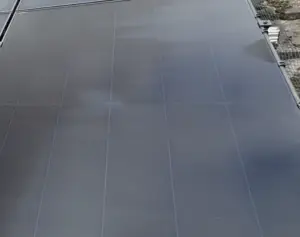
The Aiko 455W Generation 2 All-Black Solar Panel is a premium, high-efficiency panel designed for both performance and aesthetics. With an impressive 455W power output and advanced partial shading technology, it ensures optimal energy production even in less-than-ideal conditions. Its sleek all-black design blends seamlessly with modern rooftops, making it a stylish yet functional choice. Built for durability and long-term reliability, the Aiko 455W Gen 2 panel is an excellent option for homeowners seeking maximum energy yield and a visually appealing solar solution.
Inverter Options: String Inverters, Microinverters, and Power Optimizers
Inverters are essential for converting the DC electricity produced by solar panels into AC electricity used in your home for solar panel installations. Choosing the right inverter type is vital for maximizing energy production.
-
String Inverters
- Connect panels in a series, with one central inverter.
- Pros: Cost-effective, simple installation.
- Cons: Performance is affected if one panel is shaded or underperforming.

2. Microinverters
-
- Installed on each panel, enabling independent operation.
- Pros: Great for shaded areas, maximizes individual panel output.
- Cons: Higher upfront cost.
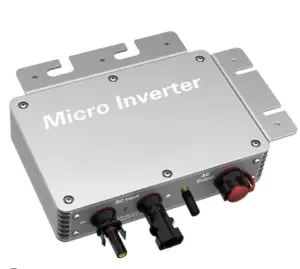
3. Power Optimizers
-
- Combine features of both string and microinverters by optimizing output at each panel but using a single central inverter.
- Pros: Balances cost and performance.
- Cons: Requires more components.
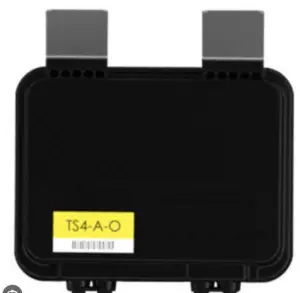
Battery Storage Systems: Benefits of Pairing Solar with Energy Storage
Battery storage systems are increasingly popular as they allow you to store excess energy for use when the sun isn’t shining.
-
Benefits:
- Energy independence during outages.
- Maximizes self-consumption, reducing reliance on the grid.
- Supports time-of-use rate savings by storing energy during low-cost periods.
-
Considerations
:
- Battery size and capacity should match your energy usage patterns.
- Lithium-ion batteries (e.g., Tesla Powerwall) are the most efficient and durable option.
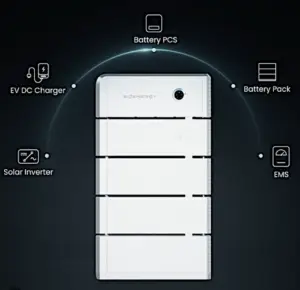
Importance of Warranties and Certifications: Ensuring Long-Term Reliability
Solar panels and equipment are long-term investments, so warranties and certifications are critical.
- Warranties:
- Look for panels with 25–30 year performance warranties and at least 10-year product warranties.
- Inverters and batteries typically have shorter warranties (5–10 years).
- Certifications:
- Ensure products meet industry standards (e.g., MCS, NIC EIC) for safety and performance.
- Why It Matters:
- High-quality products with strong warranties and certifications provide peace of mind and reduce long-term repair costs.
Case Study: High-Quality Systems vs. Budget-Friendly Alternatives
A homeowner in Wiltshire installed a budget-friendly 5 kW system with low-cost polycrystalline panels and a string inverter. While the system had a lower upfront cost, shading issues reduced efficiency by 20%, and frequent inverter failures added unexpected maintenance expenses.
In contrast, their neighbor invested in a high-quality system with monocrystalline panels, microinverters, and a battery. Though the upfront cost was higher, their system delivered consistent performance and savings, paying for itself two years sooner than the budget-friendly alternative.
Conclusion
Investing in quality solar panels and equipment is one of the smartest decisions you can make to maximize your solar system’s performance and longevity. While budget-friendly options may seem appealing initially, they often result in higher maintenance costs and reduced energy production over time. By choosing efficient panels, the right inverter, and robust warranties, you can ensure your system delivers the maximum return on investment while powering your home reliably for decades.
3. Leverage Custom Solar System Designs for Maximum Efficiency
When it comes to solar panel installations, one size does not fit all. Every home or business has unique site conditions, roof shapes, and energy requirements, making custom solar system designs essential for achieving optimal performance. A tailored approach ensures your system maximizes energy output, fits seamlessly with your property’s features, and provides the best return on investment.
Let’s explore why custom designs matter, how advanced tools drive better results, and how bespoke solutions can address even the trickiest challenges.
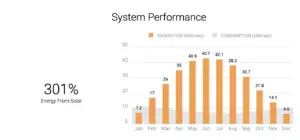
Why Custom Designs Matter: Tailoring Systems to Unique Site Conditions
Solar installations must account for numerous variables to function at peak efficiency, including roof orientation, shading, and available space. A generic design may overlook these factors, leading to underperformance and wasted potential.
Key Benefits of Custom Designs:
- Optimized Energy Production: Tailoring panel placement and tilt to site-specific conditions ensures maximum sunlight exposure.
- Enhanced Aesthetics: Custom designs integrate better with the property’s architecture, preserving curb appeal.
- Cost-Effectiveness: A well-planned system minimizes wasted materials and reduces long-term maintenance costs.
For instance, a house with partial shading from nearby trees benefits significantly from microinverters or power optimizers, which are often omitted in standardized systems.
Role of Software Tools: Simulations and Data-Driven Designs
Advanced solar design tools have revolutionized the customization process, enabling precise simulations and data analysis.
Key Tools and Their Benefits:
- Solar Pathfinder and PVsyst: Assess shading and sunlight availability throughout the year.
- HelioScope and Aurora Solar: Create 3D models of rooftops to simulate panel placement and predict energy output.
- Energy Consumption Analysis: Tools analyze historical energy usage to size systems accurately.
These software solutions allow designers to test different configurations before installation, ensuring the final design meets both energy and aesthetic requirements.
Bespoke Solutions for Roof Shapes: Addressing Challenges Like Dormers or Skylights
Not all roofs are simple, flat surfaces. Dormers, skylights, and irregular shapes can complicate solar panel placement, but bespoke designs offer creative solutions.
Addressing Unique Challenges:
- Dormers and Chimneys: Panels can be arranged to avoid shading and maximize usable space.
- Skylights: Custom layouts ensure that natural light features are not obstructed while utilizing the remaining roof space effectively.
- Irregular Roofs: Ground-mounted systems or multi-roof installations can supplement energy production.
By leveraging custom designs, even the most challenging roof configurations can accommodate efficient solar systems.
Case Study: A Poorly Designed System vs. an Optimized One
A homeowner in Romsey installed a solar system designed using a standard template. The generic layout resulted in significant shading during the morning hours and suboptimal placement on a partially south-facing roof, reducing energy production by 25%.
After consulting with a professional specializing in custom designs, the system was reconfigured using advanced simulation tools. Panels were relocated to areas with better sun exposure, and microinverters were added to address partial shading. The homeowner’s energy output increased by 30%, recouping the cost of the redesign within two years.
Conclusion
Custom solar system designs are critical for ensuring that your installation performs at its best. By tailoring systems to your property’s unique features, leveraging advanced design tools, and addressing challenges like irregular roof shapes, you can maximize energy production and financial returns. Don’t settle for a cookie-cutter approach—work with experienced professionals to craft a system that works for you and your property.
4. Maintain and Monitor Your Solar System for Optimal Performance
Once your solar panels are installed, the journey doesn’t end there. Regular maintenance and monitoring are essential for ensuring your system operates efficiently and delivers the maximum return on your investment. Solar panels are durable and low-maintenance, but neglecting them can lead to reduced energy production and costly repairs over time. Here’s how you can keep your solar system in top shape.
Importance of Regular Maintenance: Keeping Panels Clean and Functional
Solar panels are exposed to the elements year-round, which means dirt, dust, leaves, bird droppings, and even snow can accumulate on their surface. This buildup creates a barrier that blocks sunlight, reducing efficiency.
Key Benefits of Regular Maintenance:
- Maximized Energy Production: Clean panels capture more sunlight, leading to higher electricity generation.
- Longevity: Routine care prevents wear and tear, ensuring your system lasts for decades.
- Cost Savings: A well-maintained system minimizes the risk of expensive repairs and downtime.
How Often Should You Clean Panels?
- In areas with heavy dust, pollen, or pollution, clean panels every 3–6 months.
- In regions with regular rainfall, cleaning every 12-18 months will suffice.
Monitoring Systems: Using Technology to Track Performance
Modern solar systems often include monitoring software that provides real-time insights into performance. These tools are invaluable for identifying inefficiencies and ensuring your system is running as expected.
Benefits of Monitoring Systems:
- Real-Time Data: Track energy production, consumption, and overall system health.
- Alerts for Issues: Receive notifications for performance drops or component failures.
- Energy Insights: Optimize your energy use by analyzing trends and patterns.
Popular Monitoring Tools:
- SolarEdge Monitoring: Provides panel-level performance tracking.
- Enphase Enlighten: Offers detailed insights for systems using microinverters.
- Tesla App: Monitors solar and battery systems seamlessly.
- Fox ESS: Monitors solar and battery systems seamlessly.
- MySigen: Monitors solar and battery systems seamlessly.
By staying informed about your system’s performance, you can quickly address any issues and avoid energy production losses.
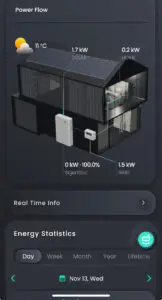
Identifying Performance Issues: How to Spot and Fix Inefficiencies
Even with regular maintenance, occasional performance dips can occur. Identifying and resolving these inefficiencies promptly is key to maintaining optimal output.
Common Causes of Performance Issues:
- Shading: New obstructions like tree growth or nearby construction can affect sunlight exposure.
- Dirty Panels: Accumulated debris reduces efficiency.
- Inverter Problems: Faulty inverters can prevent energy conversion.
- Panel Damage: Cracks or other physical damage from hail or debris can reduce energy output.
How to Address Issues:
- Check Monitoring Data: Look for sudden drops in performance.
- Inspect Panels: Visually examine for dirt, cracks, or shading.
- Call Professionals: For issues with inverters or wiring, consult a technician.
DIY Maintenance vs. Professional Help: Pros and Cons
Depending on your expertise and system size, you may choose to handle maintenance tasks yourself or hire professionals.
DIY Maintenance:
- Pros:
- Cost-effective for basic tasks like cleaning.
- Allows you to address minor issues quickly.
- Cons:
- Requires proper equipment (e.g., soft brushes, squeegees, safety gear).
- Risk of damaging panels or voiding warranties.
Professional Maintenance:
- Pros:
- Ensures thorough cleaning and inspection.
- Technicians can spot and address hidden issues.
- Cons:
- Costs vary depending on service frequency and location.
For complex tasks like repairing inverters or replacing damaged panels, professional assistance is always recommended.
Case Study: Impact of Consistent Cleaning on Energy Production
The Problem:
A homeowner in Ringwood that lived right next to the motorway noticed a 15% drop in their solar system’s energy production after two years. Inspection revealed a thick layer of dust and pollen accumulated due to the area’s polluted climate.
The Solution:
The homeowner scheduled 6 monthly professional cleanings and began using a monitoring system to track production. After the first cleaning, energy output returned to optimal levels.
The Results:
- The system produced 20% more electricity annually compared to the uncleaned state.
- ROI improved as higher energy production reduced reliance on grid electricity.
Conclusion
Maintaining and monitoring your solar system is the key to unlocking its full potential. By keeping panels clean, using advanced monitoring tools, and addressing performance issues promptly, you can ensure your system delivers consistent energy and cost savings for years to come. Whether you opt for DIY maintenance or professional help, a proactive approach will keep your solar investment shining bright.
5. Maximize Financial Incentives and Programs for Your Solar Investment
Installing solar panels is not only an eco-friendly decision but also a smart financial move. To further improve your Return On Investment (ROI), leveraging available financial incentives and programs can significantly reduce your upfront costs and boost long-term savings. From tax credits and rebates to net metering and local grants, there are many ways to maximize your solar installation’s profitability.
In this guide, we’ll explore the most effective financial strategies and share a real-world case study of how incentives improved a family’s solar ROI.
1. Solar Tax Credits and Rebates: How to Make the Most of Available Incentives
Governments worldwide offer tax credits and rebates to encourage solar adoption. These incentives can cover a significant portion of your installation costs, making solar more affordable for homeowners and businesses.
Here in the UK all Solar and Battery installations are 0% VAT:
- 0% VAT:
- This makes the cost of installing solar panels 20% cheaper.
- Applies to systems installed through to 2027.
- Includes costs for panels, inverters, batteries, and installation labour.
UK Government 0% VAT.
VAT on energy-saving products
You’ll pay a rate of either 0% VAT when certain energy-saving products are installed in your home if you’re eligible.
Not all products or installations qualify for the lower rate and you cannot buy or install them yourself.
Your installer will be responsible for charging you the correct rate of VAT.
The rate you pay and your eligibility depends on whether you are in Great Britain (England, Scotland and Wales) or Northern Ireland.
https://www.gov.uk/tax-on-shopping/energy-saving-products
2. Understanding Net Metering: Selling Excess Power Back to the Grid
Net metering is a policy that allows solar panel owners to send excess energy back to the grid and receive credits on their electricity bills. It’s one of the most effective ways to maximize the financial benefits of solar.
How Net Metering Works:
- During the day, your solar panels may produce more electricity than you use.
- This excess energy is fed into the grid, and your utility company credits your account.
- At night or during cloudy periods, you can draw on these credits to offset your energy usage.
Key Benefits of Net Metering:
- Reduces or eliminates electricity bills.
- Accelerates ROI by monetizing surplus energy.
- Encourages energy conservation and efficiency.
Tips for Maximizing Net Metering:
- Install a system size that matches your energy consumption patterns.
- Check local net metering policies; some utilities may cap the amount of credit or offer lower rates.
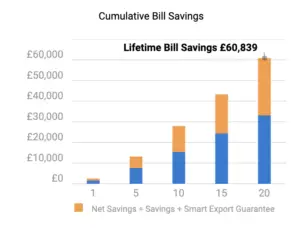
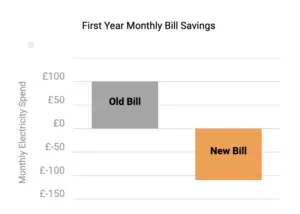
3. Case Study: A Family’s ROI Improvement with Incentives
Background:
The Smith family in Southampton decided to install a 7 kW solar system to reduce their electricity bills and lower their carbon footprint. While the upfront cost was £9,000, they were determined to explore every available incentive to make their investment worthwhile.
Steps Taken:
- Zero Vat: The family benefited from 0% vat, saving the family, £1800.00
- Electric Rebate: Their utility company provided a rebate of £2000.00
- Net Metering: With the UK’s net metering program, they earned bill credits for surplus energy of 15p per kWh, reducing their annual electricity costs down to minus which helped ofset their gas bill.
Results:
- Total Installation Cost After Incentives: £4000.00
- Annual Savings: £2000.00 from net metering, with an estimated payback period of 7 years.
- Environmental Impact: The system reduced the family’s carbon footprint by 8 metric tons annually.
The Smith family achieved a 47% reduction in their upfront costs and saw consistent savings, making solar a financially and environmentally rewarding decision.
Conclusion
Maximizing financial incentives and programs is a critical step in ensuring your solar investment delivers optimal ROI. By taking advantage of tax credits, rebates, net metering, and local grants, you can significantly reduce upfront costs and enjoy ongoing savings. Programs like these not only make solar energy more accessible but also accelerate the transition to a sustainable future.
Be proactive in researching and applying for these incentives, and consult with your solar installer or tax advisor to ensure you’re capturing all available benefits. Like the Smith family, you can turn your solar installation into a powerful financial and environmental asset.
7. Plan for Future Expansion: Building a Solar System That Grows With You
Investing in solar energy is a forward-thinking decision, but your energy needs might not stay static over time. Household growth, changes in energy consumption, or adopting new technologies like electric vehicles (EVs) could increase your demand for power. Planning for future expansion ensures your solar system remains flexible and scalable, saving time and money in the long run. In this guide, we’ll discuss strategies for scaling your system, designing for growth, and leveraging innovative technologies, culminating in a real-world case study of a phased solar installation project.
Scaling Your System: Adding Panels or Upgrading Components Over Time
When your energy requirements increase, scaling your solar system involves either adding more panels or upgrading components like inverters and batteries. Planning for scalability during the initial installation simplifies the process.
Adding Panels:
- Roof Space: Ensure your roof has enough space to accommodate additional panels. A structural assessment can confirm if your roof can handle the extra weight.
- Inverter Capacity: Many inverters have a specific capacity limit. Opting for an inverter with surplus capacity during the initial installation allows for seamless expansion.
- Wiring and Connections: Plan your wiring layout to accommodate additional panels, avoiding costly rewiring later.
Upgrading Components:
- Inverters: If your energy needs exceed your inverter’s capacity, upgrading to a more powerful model or using multiple inverters is essential.
- Batteries: Adding or upgrading battery storage allows you to store the extra energy generated by additional panels, maximizing self-consumption.
Designing for Growth: Planning From the Start for Potential Expansion
A little foresight during the planning phase can make future expansions more cost-effective and less disruptive.
Steps to Design for Growth:
- Assess Future Energy Needs:
- Consider future appliances, EVs, or changes in household size that could increase consumption.
- Calculate potential energy requirements and plan for a system that can scale to meet them.
- Install Expansion-Friendly Equipment:
- Choose inverters and batteries that can accommodate extra capacity.
- Opt for modular components that integrate easily with additional panels.
- Position Panels Strategically:
- Leave open roof or ground space for future panel additions.
- Avoid creating layouts that complicate expansion, such as panels blocking potential installation sites.
- Consult with Experts:
- Work with solar designers who can simulate future scenarios and recommend solutions for a scalable system.
Innovative Technologies: Exploring New Advancements in Solar Energy
Solar technology is evolving rapidly, making it easier to expand and enhance systems over time. Staying informed about these innovations ensures your system remains cutting-edge.
Key Innovations to Watch:
- High-Efficiency Panels:
- Advances in solar panel efficiency mean you can generate more power from fewer panels, freeing up space for future additions.
- Next-Generation Inverters:
- Smart inverters with advanced monitoring capabilities allow seamless integration of new panels or batteries.
- Energy Storage Systems:
- Emerging battery technologies, such as solid-state batteries, promise higher capacities and longer lifespans.
- Solar Tracking Systems:
- Ground-mounted systems with solar trackers adjust the angle of panels to follow the sun, increasing efficiency without requiring more panels.
- Vehicle-to-Grid (V2G) Integration:
- Electric vehicles are being designed to act as mobile batteries, offering additional storage for your solar energy.
Case Study: A Phased Installation Project
The Scenario:
The Wilson family in Portsmouth decided to install solar panels to power their home and prepare for their growing energy needs. Initially, they wanted to offset their current electricity usage but planned for future expansions, including charging two EVs and installing a pool heater.
Phase 1: Initial Installation:
- The family installed a 6 kW system with 18 solar panels and a hybrid inverter capable of handling up to 10 kW.
- Wiring was configured to allow additional panels to be added easily.
- They opted for a single Sigenergy battery to store excess energy.
Phase 2: First Expansion:
- Two years later, the family purchased an electric vehicle, increasing their energy consumption. To meet the demand, they added 8 more solar panels, bringing their system capacity to 9 kW.
- Their hybrid inverter easily handled the extra load, and no additional rewiring was required.
Phase 3: Second Expansion:
- After installing a pool heater, their energy needs spiked again. They upgraded their battery storage to a dual-battery system and added 4 more panels for a total capacity of 10.5 kW.
- The original layout’s thoughtful design ensured this expansion was smooth and cost-effective.
Results:
- The phased installation saved the family thousands of dollars compared to installing an undersized system initially and retrofitting components later.
- Their solar system now offsets 95% of their energy consumption, including EV charging and pool heating.
Conclusion
Planning for future expansion is a crucial part of building a solar system that grows with you. By considering your long-term energy needs, installing scalable components, and staying informed about new technologies, you can create a system that adapts to your lifestyle and saves money over time. The Singh family’s phased installation project is a testament to how foresight and smart planning can make solar a flexible and enduring solution for your energy needs. Whether you’re starting small or building big, a well-planned solar system is an investment in your future.
Conclusion: Maximize Your Solar Potential with a Holistic Approach
Solar energy is one of the most impactful investments you can make for your home or business, offering environmental benefits, energy independence, and long-term cost savings. However, to fully unlock its potential, it’s not enough to simply install solar panels—you need a thoughtful and strategic approach. By incorporating the seven strategies discussed, you can optimize performance, extend system lifespan, and maximize your return on investment (ROI).
Recap of the Seven Strategies
- Choose the Ideal Location for Your Panels: Proper placement, orientation, and tilt ensure your panels receive maximum sunlight, boosting energy production and efficiency. Addressing shading and using tools to assess solar potential are crucial first steps.
- Invest in Quality Solar Panels and Equipment: High-quality components, including panels, inverters, and batteries, ensure reliability and durability. Strong warranties and certifications provide peace of mind and protect your investment.
- Leverage Custom Solar System Designs: Tailored designs that account for site-specific conditions, roof layouts, and energy needs deliver superior results compared to generic setups. Using advanced design tools helps optimize system performance.
- Maintain and Monitor Your System: Regular maintenance, such as cleaning panels and inspecting components, ensures consistent performance. Monitoring tools allow you to identify and fix inefficiencies quickly, extending your system’s lifespan.
- Maximize Financial Incentives and Programs: Take advantage of solar tax credits, rebates, net metering, and local grants to reduce upfront costs and improve ROI. Understanding these programs can save you thousands of dollars over the life of your system.
- Pair Solar Panels with Battery Storage: Adding batteries enables energy storage for nighttime use, reduces reliance on the grid, and provides backup power during outages. This combination enhances the resilience and efficiency of your solar setup.
- Plan for Future Expansion: Designing your system with growth in mind allows you to scale up easily as your energy needs evolve. Scalable components and innovative technologies ensure your system remains adaptable and cost-effective.
The Importance of a Holistic Approach
Each of these strategies plays a vital role in ensuring your solar investment delivers maximum benefits. However, it’s their combination—the holistic approach—that truly unlocks the potential of your solar system. By addressing every aspect, from initial planning and installation to long-term maintenance and future scalability, you create a system that is efficient, resilient, and sustainable.
A piecemeal approach might solve immediate challenges, but it often overlooks the interconnected nature of solar energy systems. For example, choosing quality components without considering site-specific design may result in underperformance. Similarly, maximizing incentives without planning for future expansion could limit your system’s ability to grow with your needs. A holistic strategy ensures every decision works together to achieve optimal outcomes.
Take Action and Maximize Your Solar Potential
The transition to solar power represents more than just an upgrade to your energy system—it’s a commitment to sustainability, energy independence, and financial savings. By applying these seven strategies, you can take control of your energy future while contributing to a greener planet.
If you’ve already made the leap to solar, use this guide to refine and enhance your system. If you’re considering solar for the first time, consult with reputable installers who can tailor a solution to your unique needs and goals. Every step you take toward a well-planned, high-quality solar system brings you closer to a future of clean, affordable, and reliable energy.
The sun is a resource that shines for everyone. By leveraging its power thoughtfully and strategically, you can maximize your solar potential and set yourself up for decades of benefits. Take the next step today and embrace the transformative power of solar energy. The future is bright—literally!
Optimize Your Solar Installation with the Best Products for Maximum Savings with our recommendation on brands.
When it comes to solar energy, choosing the right products is as important as having a well-thought-out design. The combination of cutting-edge solar panels, reliable inverters, and efficient batteries can make all the difference in maximizing energy production, minimizing utility costs, and achieving true energy independence.
At the heart of our recommended setup are the Aiko 455W Gen 2 solar panels with partial shading technology and the Sigenergy Inverter and Batteries. This ultimate configuration not only ensures efficiency but also works toward our goal of offsetting 100–150% of your energy consumption. Let’s explore why these products stand out and how they help you achieve net-zero electricity costs while even offsetting your gas bill.
Aiko 455W Gen 2 Solar Panels with Partial Shading Technology
Solar panels are the backbone of any renewable energy system, and the Aiko 455W Gen 2 panels are among the most advanced options available today. Here’s why they’re an excellent choice for your installation:
Key Features:
- High Efficiency:
- The 455W capacity per panel ensures you generate significant power even in limited space, making these panels ideal for homes with moderate roof areas.
- Partial Shading Technology:
- Shading is one of the biggest challenges in solar systems. Aiko’s Gen 2 panels mitigate the impact of shaded sections, allowing the rest of the panel to continue producing power at optimal levels.
- Durability:
- Built to withstand harsh weather conditions, these panels come with long warranties, ensuring performance and reliability over decades.
Benefits:
- More energy production in diverse weather and shading conditions.
- Increased energy savings by ensuring minimal losses, even in partially shaded environments.
Sigenergy Inverter and Batteries: The Ultimate Energy Solution
Inverters and batteries play a crucial role in converting and storing energy, and the Sigenergy system is designed for ultimate performance and reliability.
Sigenergy Inverter:
- High Conversion Efficiency:
- The Sigenergy inverter converts solar power from DC to AC with minimal energy loss, ensuring maximum electricity reaches your home.
- Advanced Monitoring:
- Built-in technology allows for real-time tracking of your energy production and consumption, enabling you to optimize usage and identify inefficiencies.
- Seamless Integration:
- Compatible with battery storage systems, the Sigenergy inverter ensures smooth operation between solar production, battery usage, and grid connection.
Sigenergy Batteries:
- Reliable Energy Storage:
- These batteries store excess solar power, ensuring you have energy available during nighttime or power outages.
- Scalable Storage:
- The modular design lets you increase storage capacity as your energy needs grow, future-proofing your system.
- Peak Shaving and Cost Savings:
- Store energy during low-cost periods and use it during peak-rate hours, lowering your overall energy bills.
Hitting 100–150% Consumption Offset
Our goal is to design a system that generates 100–150% of your energy consumption, achieving more than just zeroing out your electricity bill. Here’s why this strategy works:
- Net Zero Electricity Costs:
- By producing more electricity than you use, the excess is exported to the grid, earning you credits through net metering or other utility programs.
- Offsetting Gas Bills:
- The additional income from exporting surplus energy can be redirected to lower your gas bill, creating a comprehensive energy-saving strategy for your household.
- Future-Proofing:
- With rising energy demands from EVs, smart home devices, and other technologies, this surplus ensures your system remains efficient and cost-effective for years to come.
The Ultimate Setup for Long-Term Savings
By combining Aiko 455W Gen 2 panels with Sigenergy inverters and batteries, and aiming for 100–150% energy offset, you can expect:
- Energy Independence: Produce and store enough energy to reduce or eliminate reliance on the grid.
- Enhanced Savings: Use surplus energy credits to offset gas bills or other household expenses.
- Environmental Impact: Significantly lower your carbon footprint with a high-efficiency, sustainable energy system.
Investing in high-quality products and a tailored system design ensures you maximize your solar installation’s potential while securing long-term financial and environmental benefits. With this setup, you’re not just adopting solar—you’re redefining the way you power your life. Let’s make your solar journey a success!
If you would like a full in-depth and free site survey based on your needs and consumption contact us today Starks Solar today on 01425 460419 to find out more!
